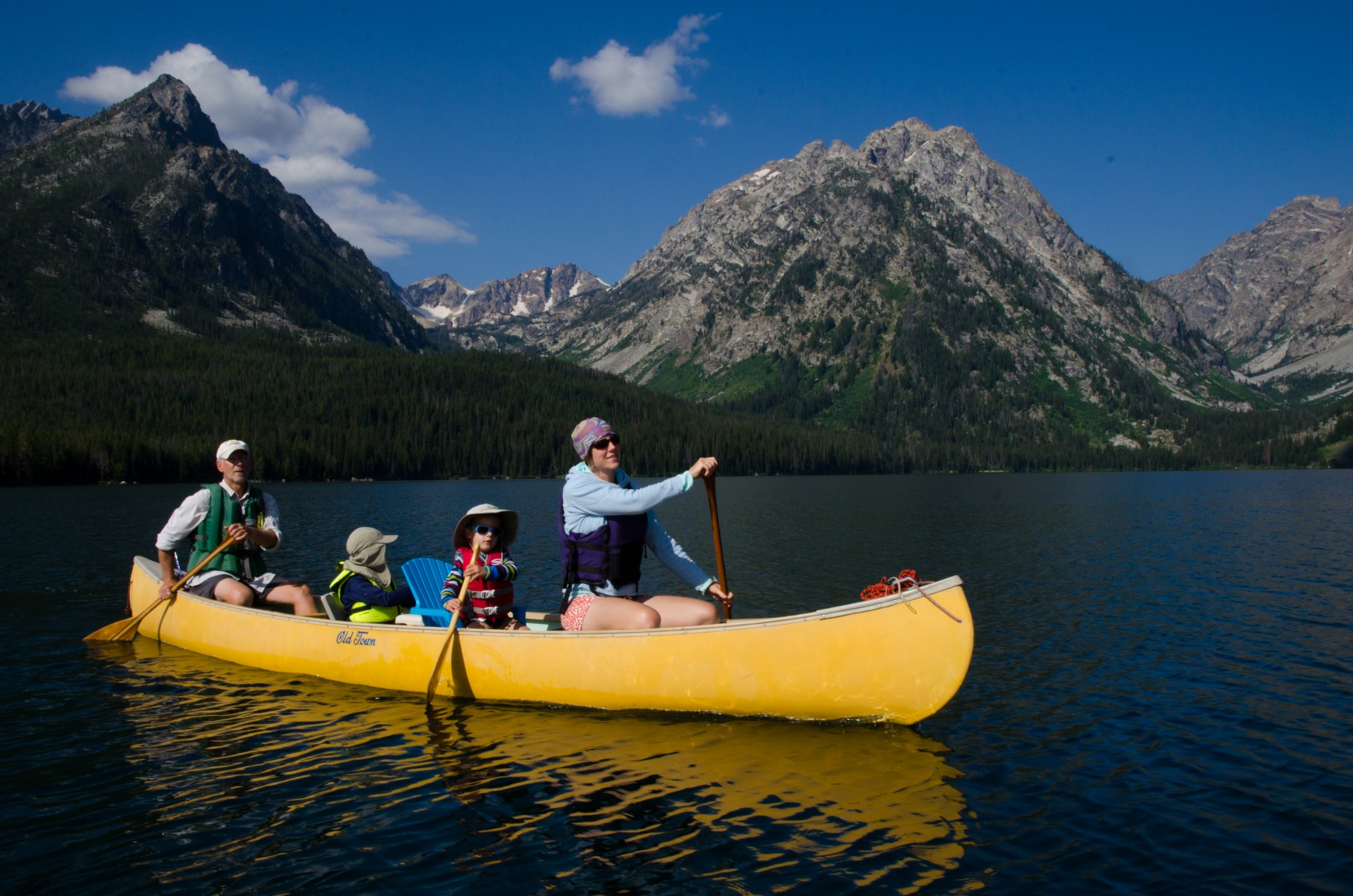The Case For Canoes

Drift boats are all the rage, and with good reason. Oar-rigged rafts also enjoy a well-earned popularity. And what fisherman doesn’t, in his heart of hearts, covet a flats skiff? Among the adventure minded, the attraction of watercraft seems to be a genetic predisposition, the expression of which begins in preadolescence and expands through adulthood. And nowadays a bigger menu of innovative conveyances holds our imaginations than ever before. It occurs to me though that amid the lusty discussion of the latest and greatest, we’ve somehow lost an appropriate appreciation for the common canoe. Some qualities to consider…
Adaptability – Every known human culture that’s had access to navigable water, throughout history and prehistory, all the world round, developed some form of canoe. In that way, it is more universal and fundamental than the wheel – and, at least until the dawn of domesticated beasts of burden, far more useful. Canoes traveled rivers, lakes, inland seas and the open ocean, serving as the primary mechanism of travel, trade, communication, hunting, fishing and war making for millennia.
Of course, with the inevitable march of progress have come boats that carry more gear; are sturdier fishing platforms; more portable overland; more maneuverable in whitewater or otherwise excel at some specialty. But to this day, no boat does it all like a canoe. An afternoon fishing trip on the river, a run through the rapids, a scenic paddle on a back country lake, a sight fishing tour of the mangroves and a month long wilderness moose hunt can all be enjoyed in a single craft. Name another boat that can make that claim. If a body of water will float a boat, the properly equipped and capably handled canoe is game. The only limiting factor is the skill level of its captain.
Accessibility – Adaptability has lead to ubiquity. One can pick-up a functional second-hand canoe for a few hundred dollars in almost any town in America. You could probably do better yet at the average Canadian yard sale. Add to your new boat a couple of paddles and PFDs and you’re in the game. You’ll likely spend a lifetime customizing and adding accouterments, but the initial barrier to entry is as low as they come.
Likewise, the basics of canoeing are incredibly intuitive and easy to learn. Mastery of the craft is an endless learning process that, much like fishing, provides infinite opportunity for improvement. But put two ten year olds in a canoe with zero instruction, and they’ll be paddling from A to B in no time.
Aesthetics – The canoe has been called mankind’s most perfect design – the pinnacle of simplicity and function. Such elegance is inherently pleasing to the eye. A visual arts critic could parse out why – something about graceful lines and the suggestion of movement – but at heart it just looks right. Or maybe I’m just a sucker for curves.
I’m not suggesting you run out and spend the dory fund on lawn-care equipment. But lets take a step back, consider the big picture, and give credit where it’s due.


Agree on all counts.
Today I own an Old Town canoe (bought used), a sit-on-top sea kayak (bought new 20 years ago), a NuCanoe (won in a conservation raffle) and an Abel single person rubber raft with oars (bought new 12 years ago); and the canoe is by far most portable, lightest, and most versatile of the various options. One person can easily get the canoe to the rack on top of my 4Runner and to the roll bars of my Polaris Ranger. It carries 2-3 folks and gear. And it’s nimbler and paddles with less effort than the other craft I own. I can paddle it upstream or down on my home river far easier and for greater distances than the others. It is a bit tippier and more difficult to get in and out of than the more stable craft… but that is minor once you learn to use it.
Having owned a flats boat in the past, I do prefer the flats boat and my sit-on-top kayak to the canoe for backcountry saltwater fishing if I am fishing alone. My canoe has a redfish emblem on it because I originally used it to stalk reds on shallow water flats, and it carries two folks easily; but range is a limitation and and entering and exiting the canoe are definitely easier on the NuCanoe and kayak. If I had only one choice for fresh and salt; river, pond, lake, and flats; I would chose the canoe.
Great perspective Ralph, thanks. A good demonstration that that for everything one can do with a canoe, there’s probably a craft that does that one thing better, but none that can do so much, so easily.
Of all my childhood memories of exploration, setting forth in a canoe tops my list!
Every childhood should be so fortunate!
Pingback: Multi-Day Backcountry Trips: With Kids | Stalking The Seam